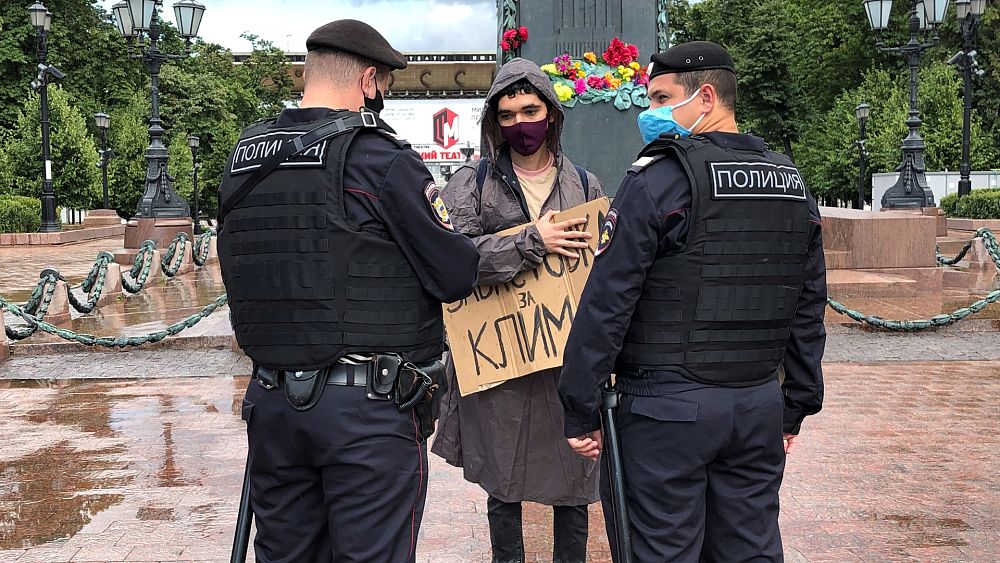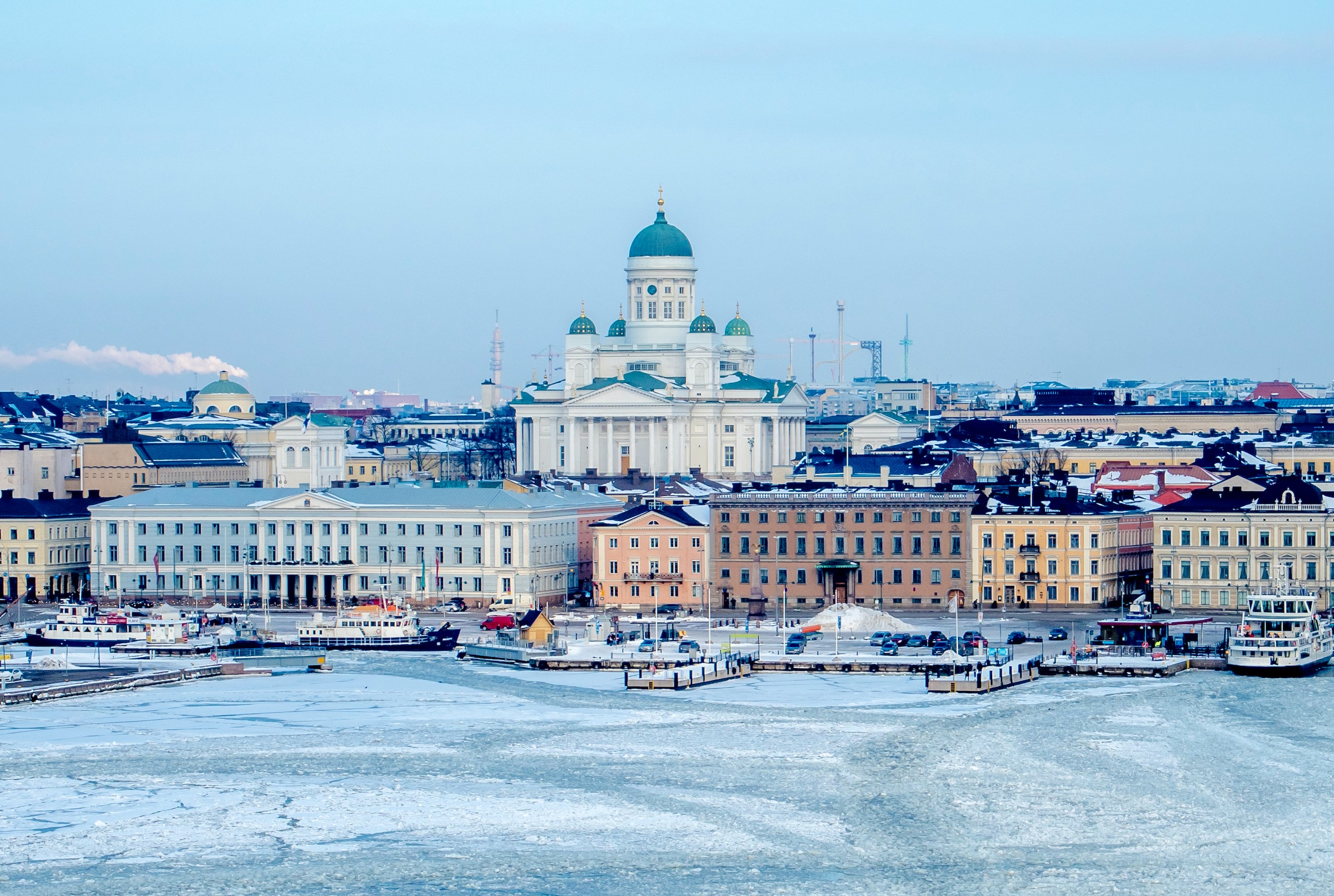Helsinki 2.0 – FPIF
The European security order has disintegrated.
You might think it’s an exaggeration. NATO is alive and well. The Organization for Security and Cooperation in Europe (OSCE) continues to operate at a high level.
Of course, there is a possibility that a great war will break out between Russia and Ukraine. But would Russian President Vladimir Putin really take such a huge risk? Moreover, the regular conflicts in that part of the world – in Ukraine since 2014, in Georgia in 2008 and in Transnistria from 1990 to 1992 – have not escalated into pan-European wars. Even the horrific bloodshed in Yugoslavia in the 1990s was largely confined to the borders of that destroyed former country, and many of Yugoslavia’s successor states have joined both the European Union and NATO.
So you can say that the European security order is in good shape, and only Vladimir Putin is the problem. The United States and Europe show determination in front of Russian forces gathered on the Ukrainian border, Putin accepts some face-saving diplomatic compromise and the status quo is restored.
Even if this happens and war is avoided this time around, Europe is still in fundamental uncertainty. The conflict in Ukraine is a symptom of this much deeper problem.
The current European security order is an overlap of three different institutional arrangements. NATO is a surprisingly healthy dinosaur of the Cold War era with 30 members $ 3 billion budgetand collective military spending of over a trillion dollars.
Russia has brought together the military union of the former Soviet states after the Cold War, the Collective Security Treaty Organization, which is anemia compared to membership, which includes only Armenia, Belarus, Kazakhstan, Kyrgyzstan and Tajikistan. Instead of enlargement, the CSTO is shrinking, having lost its existence to Azerbaijan, Georgia and Uzbekistan.
And then there is the Helsinki framework, which keeps East and West together in a fragile OSCE.
Russia or its military alliance was unable to prevent NATO from marching east to cover the former Soviet republics. Neither NATO nor the OSCE were able to prevent Russia from taking over Crimea, supporting the separatist movement in eastern Ukraine, or staging “frozen conflicts” in Georgia and Moldova.
There are currently no arms control negotiations between East and West. China became Russia’s leading trading partner about a decade agoand the United States and European countries are only left further since. Human rights and civil liberties are under threat both in the former Soviet Union and in parts of the European Union.
Do you now understand what I mean by the disintegration of the European security order? The Cold War is back, and it threatens to get hot again, if not tomorrow so maybe sometime soon.
So yes, Ukraine’s sovereignty must be defended in the face of a possible Russian invasion. But the problem is much bigger. If we do not tackle this bigger problem, we will never really protect Ukraine, address the concerns underlying Russia’s siege, or address the worrying militarization of Europe.
We need Helsinki 2.0.
Origin of Helsinki 1.0
In the summer of 1985, after studying Russian in Helsinki, I was in Moscow. I was walking on one of the streets in the Finnish capital when I came across several protesters with signs.
“Betrayal!” said one of them.
“Preservation!” said another.
The other signs depicted a Russian bear clenching its claws into the then Baltic republics of Lithuania, Latvia and Estonia.
I had happened to be among the mostly elderly protesters outside the building, where dignitaries from around the world had gathered to celebrate the 10th anniversary of the Helsinki Accords. At the time, I only had a vague idea of the treaty, and all I knew was that it was a fundamental text for East-West mitigation, an attempt to cross the Iron Curtain.
As I noticed that day, not everyone was enthusiastic about the Helsinki agreements. The treaty, signed in 1975 by the United States, Canada, the Soviet Union, and all European countries except Albania, finally strengthened the post-war borders between Europe and the Soviet Union, recognizing that the Baltic states were not independent but under it. Kremlin control. In order to legitimize its rule, especially in the Baltics, the concession it had been trying to win for years, the Soviet Union was even prepared to conclude an agreement obliging it to “respect human rights and fundamental freedoms, including freedom of thought and conscience. irrespective.”
At the time, many human rights defenders were skeptical that the Soviet Union or its Eastern European satellites would do anything like that. After 1975, “Helsinki” groups appeared around the region – the Moscow Helsinki Group, Charter 77 in Czechoslovakia – and immediately realized that the Communist government had no intention of honoring Helsinki’s commitments, at least in terms of human rights.
Most analysts at the time considered the recognition of borders cold real politics and the language of human rights as impossibly idealistic. History has shown otherwise. The borders of the Soviet Union had a period of validity of 15 years. And finally, human rights – rather than war or economic sanctions – marked the end of the Soviet Union and the Warsaw Pact. The change came in the late 1980s from ordinary people who used the freedom of thought enshrined in the Treaty of Helsinki to protest on the streets of Vilnius, Warsaw, Prague and Tirana. The decisions taken in 1975 ensured that the transitions between 1989 and 1991 were largely smooth.
After the end of the Cold War, the Helsinki Accords became institutionalized in the OSCE, and in short it promised to be the future of European security. After all, the break-up of the Soviet Union meant that NATO no longer had a reason to exist.
But institutions do not die easily. NATO developed new tasks for itself by participating in extra-regional operations in the Middle East, intervening in the Yugoslav wars and, since 1999, expanding to the east. The first Eastern European countries joined the Czech Republic, Hungary, and Poland, which brought the union technically right to Russia’s door (because Poland borders Russia’s Kaliningrad region). NATO enlargement was just the wrong answer to the question of European security – my first contribution to the FPIF in 1996 was criticism of enlargement– but the logic was behind the appetite.
The OSCE, meanwhile, worked in the shadows. Because it emphasized non-military conflict resolution, it was ideally suited to the needs of post-Cold War Europe. But it was a heavy organization, and the United States preferred the hegemonic power it exercised through NATO.
Which takes us to the current impasse. The OSCE has been at the forefront of negotiations to end the war in eastern Ukraine and maintains a special monitoring mission assess the ceasefire there. But NATO is mobilizing into a war with Russia over Ukraine, while Moscow and Washington are now as far apart as they were during the Cold War.
The Helsinki Accords were a way to bridge the bridge in 1975. What would Helsinki 2.0 look like today?
Towards Helsinki 2.0
The Helsinki Accords were built around a difficult compromise that included a compromise on borders and human rights. The new Helsinki agreement requires a similar compromise.
This compromise must address the most important existential security threat in Europe and even in the world: climate change.
As I argue in a new article in NewsweekIn return for the West recognizing Russia’s security concerns around its borders, Moscow could agree to launch a new program with its OSCE partners to reduce CO2 emissions and move away from fossil fuels. Helsinki 2.0 must be cooperation, not just dispute management. ”
Russia’s position on climate change is “evolving,” as politicians want to say. After years of ignoring the climate crisis – or simply seeing it as a good opportunity to access the resources of a melting Arctic region – the Putin regime changed his tone Last year, committed to achieving carbon neutrality by 2060.
There is clearly room for improvement in Russia’s climate policy – as in the United States and Europe. But Helsinki 2.0 can make a big contribution to that. The members of the newly established OSCE will be able to cooperate technically to reduce CO2 emissions, monitor countries’ commitments to cut emissions and apply new and stringent targets to a largely recognized sector: the military. It can even contribute to the most effective strategy to reduce CO2 emissions: demilitarization.
What does Russia get from the deal? A version of what it got in 1975: insurance around borders.
At the moment, everyone is focusing on the issue of NATO enlargement as either an unnecessary stimulus or a necessary provocation in U.S.-Russia relations. It overemphasises the importance of NATO. In the long term, it is essential to reduce NATO’s central role in European security calculations and to do so without filling the armies of European states and the EU. In any case, NATO should be slow to receive new members. More important, however, are negotiations under Helsinki 2.0, which will reduce military exercises on both sides of the Russian border, address both nuclear and conventional constructions, and accelerate efforts to resolve the “frozen conflicts” between Ukraine, Georgia and Moldova. Neither NATO nor the CSTO are suitable for these tasks.
As in 1975, not everyone is happy with Helsinki 2.0. But it becomes a good deal: a balanced mix of mutual satisfaction and dissatisfaction. More importantly, Helsinki 2.0, like its predecessor, offers civil society the opportunity to participate through human rights groups, advocates for arms control, and science and education organizations. This may be the Kremlin’s hardest pill to swallow because of it hostile attitude towards civil society. But the opportunity to secure its borders and marginalize NATO may simply prove too irresistible to Vladimir Putin.
Europe’s current security order is broken. It can be fixed by war. Or it can be reinforced by a new institutional commitment from all parties to the negotiations in an updated framework. It is a steep choice when the status quo does not last.




